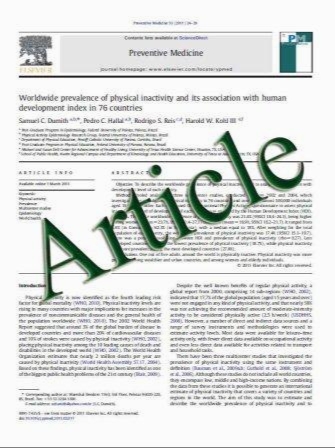Association between weight changes and changes in hip geometric indices in the Japanese female population during 10-year follow-up: Japanese Population-based Osteoporosis (JPOS) Cohort Study
- نوع فایل : کتاب
- زبان : انگلیسی
- مؤلف : N. DongMei & M. Iki & J. Tamaki & Y. Sato & S. Kagamimori & Y. Kagawa & H. Yoneshima & Japanese Population-based Osteoporosis (JPOS) Study Group
- چاپ و سال / کشور: 2011
Description
Summary During a 10-year follow-up of 893 women of various ages from the Japanese Population-based Osteoporosis Cohort Study, we evaluated the relationship between weight changes and hip geometric strength assessed by hip structure analysis. Our findings suggest that maintaining weight may help retain geometric strength and reduce hip fracture risk. Introduction The effects of changes in anthropometric indices on hip geometry in women of various ages are unclear. We evaluated these effects by analyzing 10-year longitudinal data from a representative sample of Japanese women. Methods Dual-energy X-ray absorptiometry scans of the proximal femur were performed at baseline and at the 10-year follow-up. Data were analyzed with the Hip Structure Analysis (HSA) program, which yields geometric strength indices including cross-sectional area (CSA), section modulus (SM) and subperiosteal diameter (PD) at regions of interest (ROIs) in the narrow neck (NN), intertrochanter, and femoral shaft (FS) regions. Annual percent change of each HSA index was determined. Height and weight were measured at baseline and follow-up. Results After excluding subjects with factors affecting bone metabolism, we evaluated 893 women (18.79 years old at baseline). The greatest changes in most HSA indices during the follow-up were observed in subjects aged .70 years at all ROIs. PD modestly but significantly expanded with age, but this change was not significant in subjects aged .70 years or those who had entered menopause .20 years before baseline. An increasing trend in weight was associated with an increase or smaller decline in CSA and SM at the NN and FS regions regardless of menopausal status after adjusting for age, height, and weight at baseline and change of estimated volumetric bone mineral density. Changes in height showed a much weaker association with HSA indices. Conclusions Maintaining weight may help retain hip geometric strength and reduce the risk of hip fracture.
Osteoporos Int DOI 10.1007/s00198-011-1733-8 Received: 19 November 2010 / Accepted: 1 June 2011


